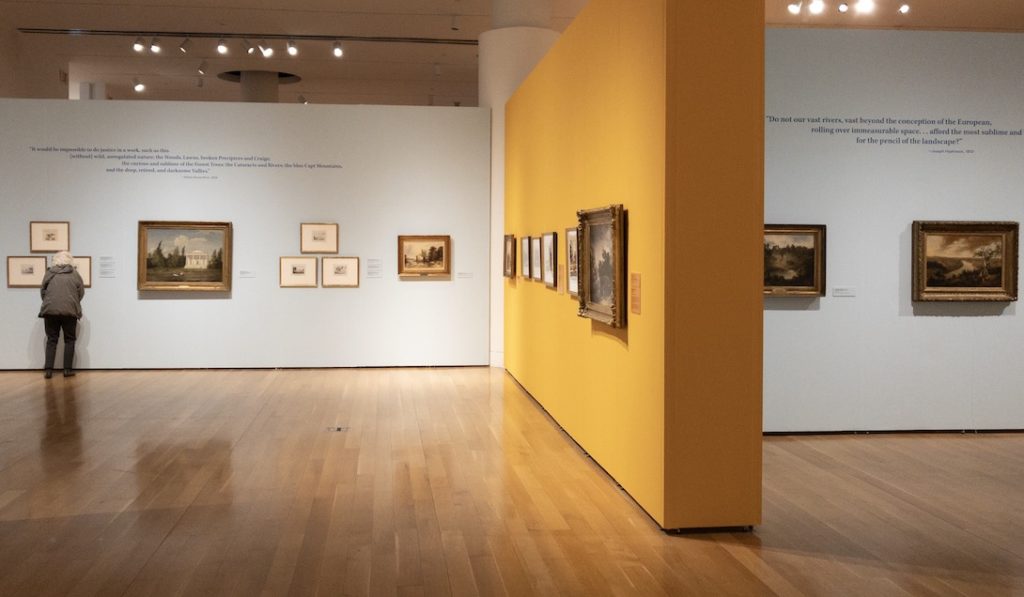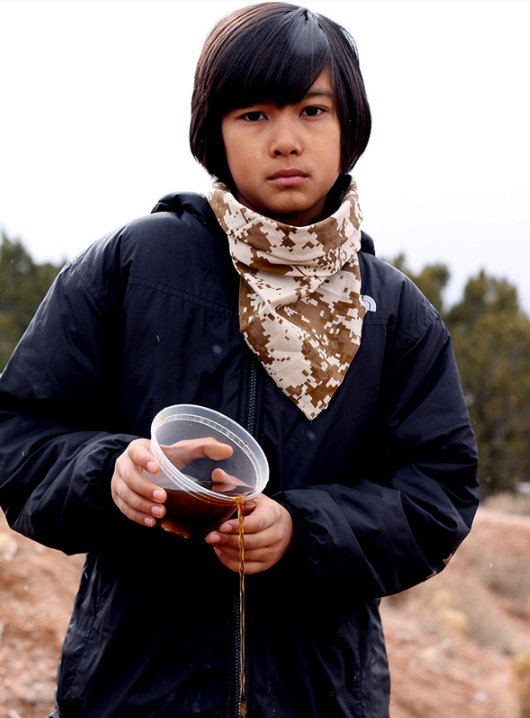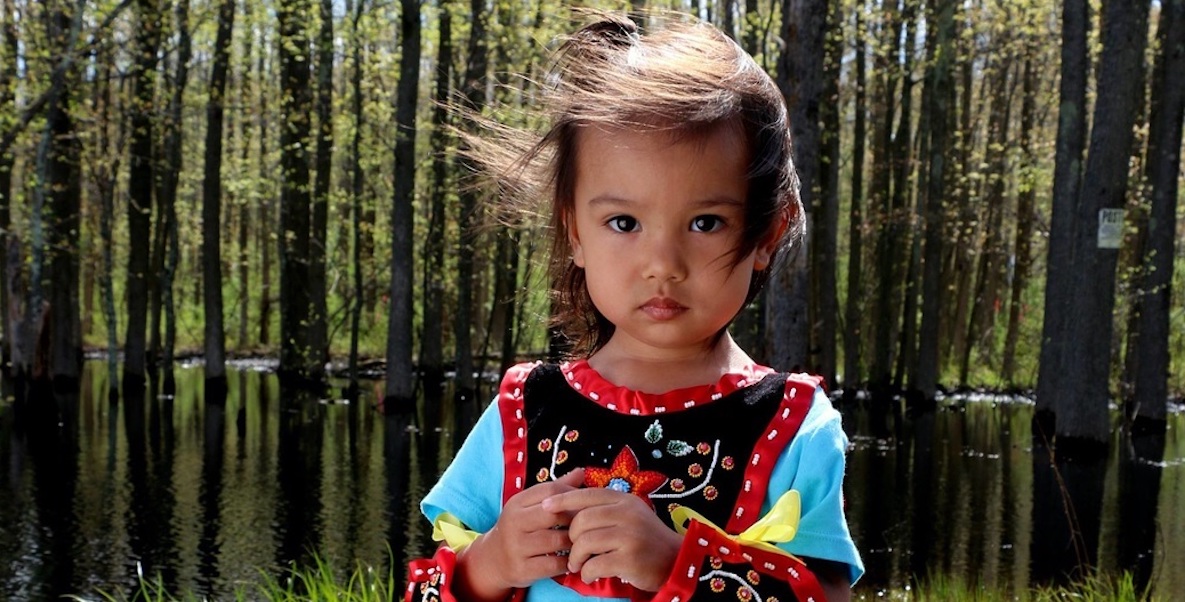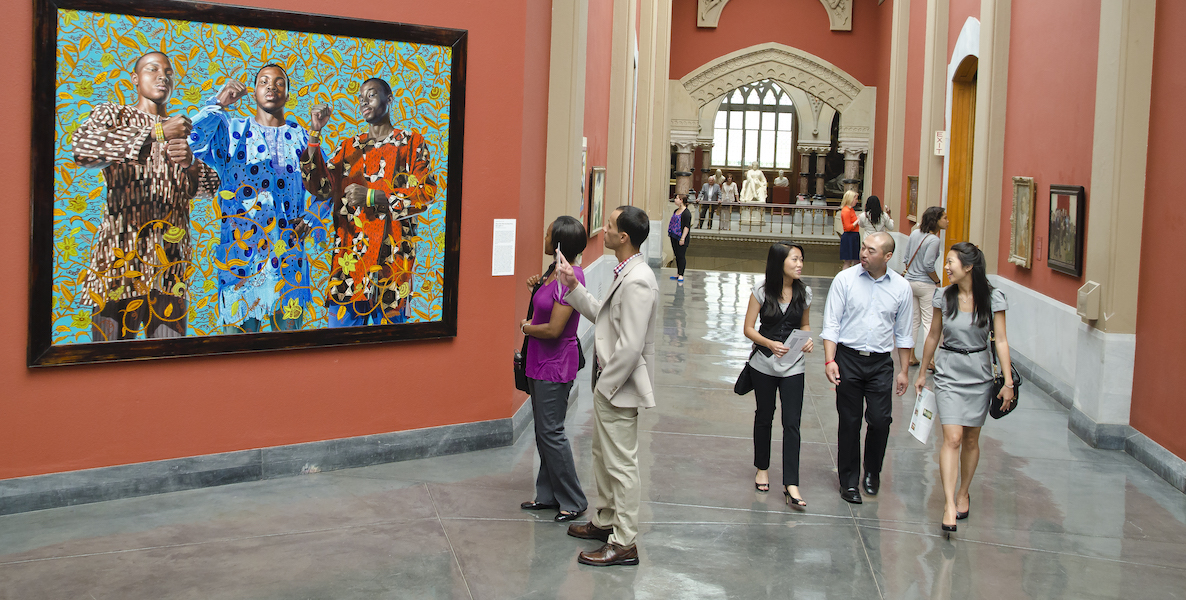The Pennsylvania Academy of the Fine Arts’ exhibit From the Schuylkill to the Hudson: Landscapes of the Early American Republic tells a little-known history of landscape painting in Philadelphia. In works drawn mostly from PAFA’s permanent collection, the exhibit shows Philly’s influence on American landscape representation and the better-known Hudson River School, founded 20 years after PAFA.
But look a little closer and you’ll see the exhibit acknowledges the absence of other little-known stories: those of the indigenous people who were fighting for the very land these romantic paintings depict. A second introduction to the exhibit is painted on the wall, entitled, “Before the Schuylkill and the Hudson”:
These rivers have long and rich traditions as part of communities other than those depicted by settler colonial artists, and the curators wish to pay respect to the Lenape peoples—past, present, and future—and their continuing presence in the homeland and throughout the Lenape diaspora.
The Lenni-Lenape (which means “original people”) Indians are the first known![]() settlers of the region including Delaware, eastern Pennsylvania, New Jersey and southern New York. They are thought to have lived here more than 10,000 years before Europeans came over and are considered a “grandfather tribe” from which many other tribes spawned. Despite Lenapes being forced west starting in the 17th Century, and continuously stripped of their rights, many still live here today.
settlers of the region including Delaware, eastern Pennsylvania, New Jersey and southern New York. They are thought to have lived here more than 10,000 years before Europeans came over and are considered a “grandfather tribe” from which many other tribes spawned. Despite Lenapes being forced west starting in the 17th Century, and continuously stripped of their rights, many still live here today.
The wall text lists the Lenape names for some of the rivers depicted in the exhibit: The Hudson: Muhheakunnuk (The River that Runs Both Ways); the Delaware: Lenapewihittuk (River of the Lenape); the Schuylkill: Tool-pay Hanna (Turtle River) or Tool-pay Hok Ing (Turtle Place); and Ganshowahanna (falling waters). And it poses a question:
When looking at the landscapes in this exhibition we hope you will ask—whose perspective is being captured, whose view, and whose land?

“I wanted to tell the story of landscape representation over 100 years: 1776 to 1876,” says curator Anna Marley. “But I was very aware that in doing that, there were a lot of stories we were leaving out.”
![]() In response, PAFA has invited We Are the Seeds, an indigenous arts nonprofit to host a panel and performance this weekend to build context around the exhibit. It’s a continuation of the museum’s deliberate efforts to bring in more art from marginalized communities, work which has made PAFA among the country’s leaders in buying art from women and African Americans.
In response, PAFA has invited We Are the Seeds, an indigenous arts nonprofit to host a panel and performance this weekend to build context around the exhibit. It’s a continuation of the museum’s deliberate efforts to bring in more art from marginalized communities, work which has made PAFA among the country’s leaders in buying art from women and African Americans.
It’s a way to reverse decades of invisibility in the art world. Peruse the landscapes, for instance, and you’ll see almost no native representation; they are erased from the landscapes by painters of this era—only after they were forced west do they reappear in works as tokens of American culture.
“While we have this historic show—which shows these images that, once you start digging in to them, can be very oppressive and depressing—it was important to us to engage with local Native American artists,” says Marley.
Saturday’s event will feature Urie Ridgeway, council member of the Nanticoke Lenni-Lenape tribe in Southern New Jersey, and We Are the Seeds co-founders Paula Mirabal (Taos Pueblo) and Tailinh Agoyo (Narragansett), who will talk about how indigenous communities past and present have honored and protected our land and waterways.
“As Indians, you are born into it,” says Ridgeway. “We have a ceremony when we take the placenta and place it in the ground. That starts that mentality, that connection with mother earth.” They hold these ceremonies on more than 50 acres of tribally-owned land in Cumberland County, New Jersey. “This land was first signed away in 1688,” says Ridgeway. The tribe purchased the first 25 acres in 1995.
“You can’t be a nation without land; where do you gather?” he says. “It’s the heart and soul of our community.”
The Nanticoke Lenni-Lenape tribe includes American Indian families from ![]() southern New Jersey (Lenape) and the Delmarva Peninsula (Nanticoke) who started to merge in the 1600s after many of their people were forced west.
southern New Jersey (Lenape) and the Delmarva Peninsula (Nanticoke) who started to merge in the 1600s after many of their people were forced west.
Ridgeway will share more about the tribe at the event, including recent struggles like their six-year battle with the state of New Jersey to reaffirm their tribal recognition, which was disavowed by the Christie administration in 2012 (part of an appalling history of attempted erasure of tribes in our region).
Tailinh Agoyo will share her photo series, The Warrior Project, powerful photos of native children and young indigenous activists from across the country.

“When we think about native people, we think about them in the past,” Agoyo says. We romanticize the way they lived in harmony with the earth, without acknowledging that their work is ongoing, she says. “We are still here. Despite all that has been done to try to erase us, we survived and we’re thriving.”
And all the recent talk of the climate crisis and how we need to better protect our land and water? It’s nothing new to indigenous communities. “What people are realizing now is something that we have talked about forever,” she says. “Indigenous women are the leaders in this and we need to listen to them: We cannot make it if we do not take care of this earth.”
November 23, 2-3:30pm, Rhoden Arts Center, 118-128 N Broad St; Reception 3:30-5pm, The Fabric Workshop and Museum, 1214 Arch Street, Tickets $15
Header Tailinh Agoyo via The Warrior Project



